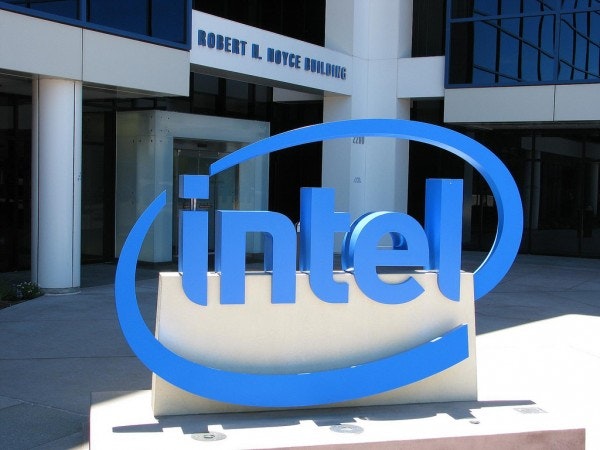As an investor, it pays to follow the cash. If you figure out how a company moves its money, you might eventually find some of that cash flowing into your pockets.
In this series, we’ll highlight four companies in an industry and compare their “cash king margins” over time, trying to determine which has the greatest likelihood of putting cash back in your pocket. After all, a company can pay dividends and buy back stock only after it’s actually received cash — not just when it books those accounting figments known as “profits.”
Today, let’s look at Intel Corporation (NASDAQ:INTC) and three of its peers.

The cash king margin
Looking at a company’s cash flow statement can help you determine whether its free cash flow backs up its reported profit. Companies that can create 10% or more free cash flow from their revenue can be powerful compounding machines for your portfolio. A sustained high cash king margin can be a good predictor of long-term stock returns.
To find the cash king margin, divide the free cash flow from the cash flow statement by sales:
Cash king margin = Free cash flow / sales
Let’s take McDonald’s Corporation (NYSE:MCD) as an example. In the four quarters ending in December, the restaurateur generated $6.97 billion in operating cash flow. It invested about $3.05 billion in property, plant, and equipment. To calculate free cash flow, subtract McDonald’s investment from its operating cash flow. That leaves us with $3.92 billion in free cash flow, which the company can save for future expenditures or distribute to shareholders.
Taking McDonald’s sales of $25.5 billion over the same period, we can figure that the company has a cash king margin of about 14% — a nice high number. In other words, for every dollar of sales, McDonald’s produces $0.14 in free cash.
Ideally, we’d like to see the cash king margin top 10%. The best blue chips can notch numbers greater than 20%, making them true cash dynamos. But some businesses, including many types of retailing, just can’t sustain such margins.
We’re also looking for companies that can consistently increase their margins over time, which indicates that their competitive position is improving. Erratic swings in margins could signal a deteriorating business or perhaps some financial skullduggery. You’ll have to dig deeper to discover the reason.
Four companies
Here are the cash king margins for four industry peers over a few periods.
| Company | Cash King Margin (TTM) | 1 Year Ago | 3 Years Ago | 5 Years Ago |
|---|---|---|---|---|
| Intel Corporation (NASDAQ:INTC) | 14.7% | 18.9% | 18.9% | 19.9% |
| Applied Materials, Inc. (NASDAQ:AMAT) | 18.7% | 19.6% | 12.0% | 20.3% |
| Advanced Micro Devices, Inc. (NYSE:AMD) | (8.7%) | 2.0% | 0.1% | (34.1%) |
| Texas Instruments Incorporated (NASDAQ:TXN) | 22.8% | 17.8% | 18.1% | 26.9% |
Source: Capital IQ, a division of Standard & Poor’s.
Texas Instruments Incorporated (NASDAQ:TXN) offers more than double our 10% threshold. However, its current cash king margins are more than four percentage points lower than they were five years ago. Applied Materials, Inc. (NASDAQ:AMAT) also far exceeds our threshold, but its margins have fluctuated a great deal over the past five years, and are slightly lower than they were five years ago. Intel Corporation (NASDAQ:INTC) also meets our threshold, but it has seen consistent declines in its margins over the five-year period. However, it offers an attractive 4.2% dividend yield, a bit better than TI’s 3.2% and Amat’s 3%. Advanced Micro Devices offers negative cash king margins, and while those margins are better than five years ago, they are the lowest they’ve been in the last three periods. Also, unlike the other companies, Advanced Micro Devices does not offer a dividend.
Intel Corporation (NASDAQ:INTC) has had a harder time leveraging the popularity of smartphones and other mobile devices than some of its competitors due to its limited success in marketing mobile chips and processors, where QUALCOMM, Inc. (NASDAQ:QCOM) dominates the market. Texas Instruments Incorporated (NASDAQ:TXN) faced similar struggles competing in the mobile chip area, and consequently decided to leave that space altogether. Applied Materials, Inc. (NASDAQ:AMAT)’s revenues have been hit hard by a global economic downturn, which has resulted in a decrease in chip orders from major customers Taiwan Semiconductor Mfg. Co. Ltd. (ADR) (NYSE:TSM) and United Microelectronics Corp (ADR) (NYSE:UMC). Also, like Intel Corporation (NASDAQ:INTC), it faces challenges associated with declining PC sales and increasing interest in mobile devices, which reduces the demand for its chips. While AMD suffers from more volatility than its competitors, the company stands to benefit a great deal if Sony Corporation (ADR) (NYSE:SNE) uses AMD’s technology in its latest PlayStation as rumored.
The cash king margin can help you find highly profitable businesses, but it should only be the start of your search. The ratio does have its limits, especially for fast-growing small businesses. Many such companies reinvest all of their cash flow into growing the business, leaving them little or no free cash — but that doesn’t necessarily make them poor investments. Conversely, the formula works better for slower-growing blue chips. You’ll need to look closer to determine exactly how a company is using its cash.
Still, if you can cut through the earnings headlines to follow the cash instead, you might be on the path toward seriously great investments.
The article Is Intel a Cash King? originally appeared on Fool.com and is written by James Royal.
James Royal has no position in any stocks mentioned. The Motley Fool recommends and owns shares of Intel. It also owns shares of Qualcomm.
Copyright © 1995 – 2013 The Motley Fool, LLC. All rights reserved. The Motley Fool has a disclosure policy.
